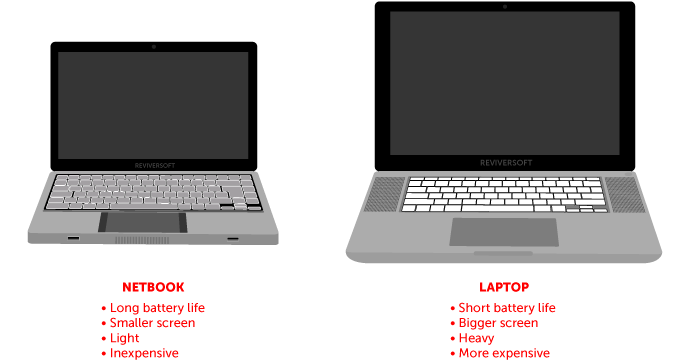-
-
products
-
resources
-
support
-
company
-
Welcome to a series of articles about your PC and why it might not be running as swiftly as you’d like. Even the newest PC, especially an all-in-one model like a Dell or an HP, can have what are called bottlenecks, named for the narrow neck of a bottle. These key areas of your computer are the most susceptible to causing performance problems, and we feel that you should be made aware of them and how to prevent them from slowing down you PC. These articles will help you for when you are buying a new computer and when you are optimizing one that you already own.

How do I Pick the Right Laptop?
So you’re after a new laptop! Though it’s possible, if you’re a little tech savvy, to put together your own desktop PC, laptops are a different animal. You buy them all at once, and you’re stuck with what the manufacturer gives you. Here’s a few key bottlenecks to look for when you’re on the hunt, so you’re not stuck with something that’ll slow down, rather than increase your productivity!First, let’s define a few terms: a netbook is a tiny PC with a small screen. It’s designed for lightness, portability and long battery life. It’s good for a first PC, for frequent travelers, and for people who do everything, even word processing, inside of a web browser. A full-sized portable PC is called a laptop or notebook.
The Screen
Small screens, especially on netbooks, can be a serious bottleneck, simply because moving windows around on a small screen with lower resolution can cost you a lot of time and increase frustration. Often websites aren’t optimized for such a small screen, so you’ll be doing a lot of scrolling to read everything. The upside is, your small screen will require less battery power to keep it lit. Me, I prefer 17″ screens to do my work; the downside of this is I get terrible battery life.The Battery
Netbooks are designed to run for a long time on a single battery. Though underpowered in many ways, they include powerful batteries that aren’t having to work too hard – so you can sometimes get 8 hours of life or more without having to plug in. It’s a real letdown when you have a full-sized laptop that only has two hours away from a power outlet. You can’t work anywhere you’d like, because you’re always hunting for a place that has power. Even places with free WiFi, like McDonalds, don’t often have power outlets.Note that the battery that comes with your laptop is not always the biggest one you can get. Look around for a third-party battery that has more cells in it, and therefore more life. Such a battery will often be heavier than your existing one, which will add to the weight of your machine. See the paragraph on weight for why that might be a bad thing.
Check out our Battery Optimizer to get more battery time in between charges. It can really make the difference when away from an outlet!
RAM
Although netbooks usually have 2 GB (gigabytes) of RAM, or memory, and have Windows XP on them for speed purposes, full-sized laptops can have 4 GB or more and Windows 7. Check out this article for more on RAM and your operating system. The bottom line: If your machine has a 32-bit operating system, look for one with 3 GB of RAM; if it has 64-bit, get one with as much RAM as you can find. You’ll notice a huge performance improvement on a laptop.CPU
In the past, laptop CPUs (the brains of your PC) were weaker and single core, so they lagged behind their desktop counterparts. This is no longer the case: even inexpensive laptops can have dual-core or better CPUs, meaning they can process multiple instructions at a time. Laptops can get pretty speedy! Note that if you go the netbook route, along with the smaller screen I talked about above, your CPU is going to be underpowered. Even if all you use it for is Web browsing, attempting to play a Flash game in Chrome or Firefox is going to slow your machine to a crawl. Your best bet is to get a full-sized laptop for computing purposes, and look into a tablet PC for pure browsing. Even though the majority of tablets don’t support Flash. It’s a tradeoff.Weight
A lot of extra features can add a ton of weight to your machine, which can cause issues when traveling. Sometimes a light, thin machine is what you want if you’re a frequent traveler, but you sacrifice features in the process. It’s up to you to balance the lightness of the machine with features you absolutely have to have. Note that a battery with a longer life (more cells) is going to be heavier than one with shorter life. Overall, a machine 10 pounds or less is ideal. 14 pounds or more and you’re pushing it.Output
You want a machine with HDMI out. That means it can output in high-def using a universal cable that’s really easy to come by, and that most TVs and projectors have. Why do you need HDMI out? Doing presentations! This has happened to me before: I had the wrong VGA-out cable for the projector I was trying to use. Talk about your bottlenecks! Why else do you need it? Watching shows bought from Amazon or iTunes on your TV in high-def instead of on your little laptop screen. Having a machine with HDMI out solves so many issues.The above are the key features you’ll need to eye when going for a new laptop, in order to minimize bottlenecks and be sure you’re getting the maximum out of your machine. And don’t expect to break the bank: My laptop, bought late last year, has everything I want and was only $650. That’s not bad, is it?
I’m Not Ready!
OK, so you’re not ready to upgrade your laptop and would like to optimize your existing one. Driver Reviver is a way to keep up on the latest laptop drivers, to make sure your existing machine is running as smoothly as possible. The scan is free, so give it a try!Was this post helpful?YesNoFree Driver Updates
Update your drivers in less than 2 minutes to enjoy better PC performance - Free.
Free Driver Updates
Update your drivers in less than 2 minutes to enjoy better
PC performance - Free.
Didn't find your answer?Ask a question to our community of experts from around the world and receive an answer in no time at all.most relevant recent articles Pin It on Pinterest
